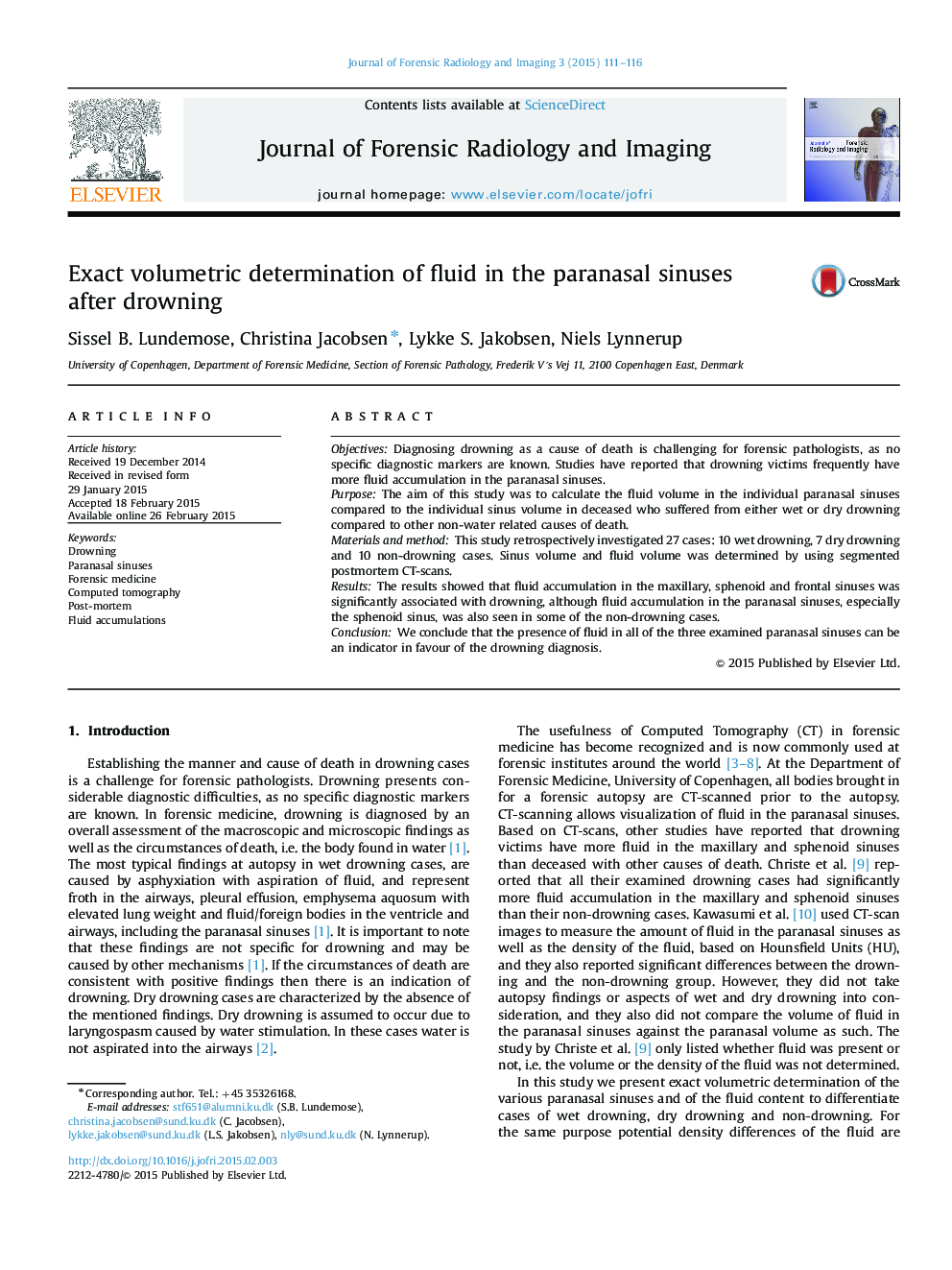| Article ID | Journal | Published Year | Pages | File Type |
|---|---|---|---|---|
| 103317 | Journal of Forensic Radiology and Imaging | 2015 | 6 Pages |
•Paranasal sinus volume and fluid content can be calculated by CT-scanning and image processing.•Drowning victims have more fluid in the maxillary and the frontal sinuses than non-drowning victims.•There was no significant difference in the fluid density between the groups.
ObjectivesDiagnosing drowning as a cause of death is challenging for forensic pathologists, as no specific diagnostic markers are known. Studies have reported that drowning victims frequently have more fluid accumulation in the paranasal sinuses.PurposeThe aim of this study was to calculate the fluid volume in the individual paranasal sinuses compared to the individual sinus volume in deceased who suffered from either wet or dry drowning compared to other non-water related causes of death.Materials and methodThis study retrospectively investigated 27 cases: 10 wet drowning, 7 dry drowning and 10 non-drowning cases. Sinus volume and fluid volume was determined by using segmented postmortem CT-scans.ResultsThe results showed that fluid accumulation in the maxillary, sphenoid and frontal sinuses was significantly associated with drowning, although fluid accumulation in the paranasal sinuses, especially the sphenoid sinus, was also seen in some of the non-drowning cases.ConclusionWe conclude that the presence of fluid in all of the three examined paranasal sinuses can be an indicator in favour of the drowning diagnosis.
